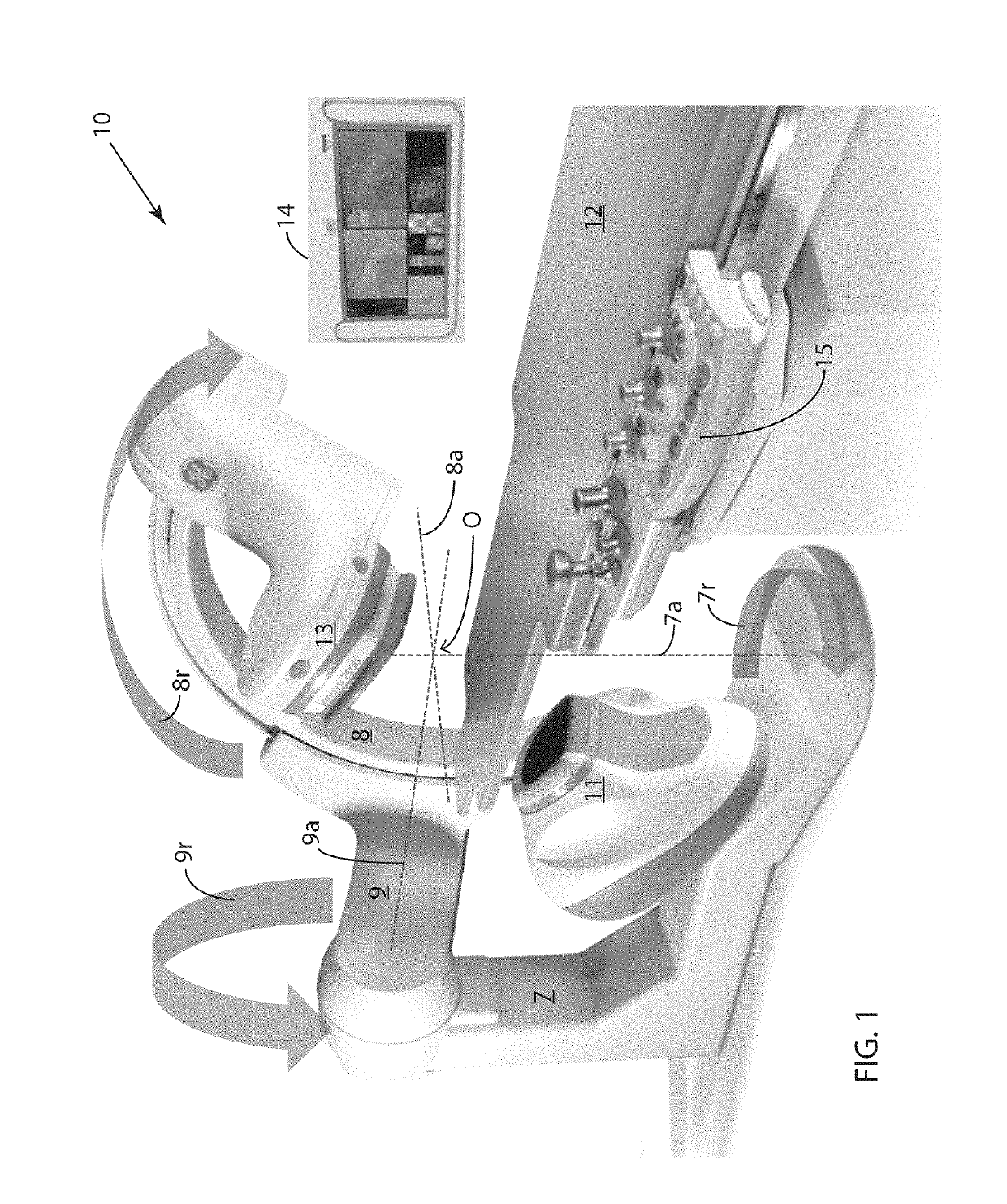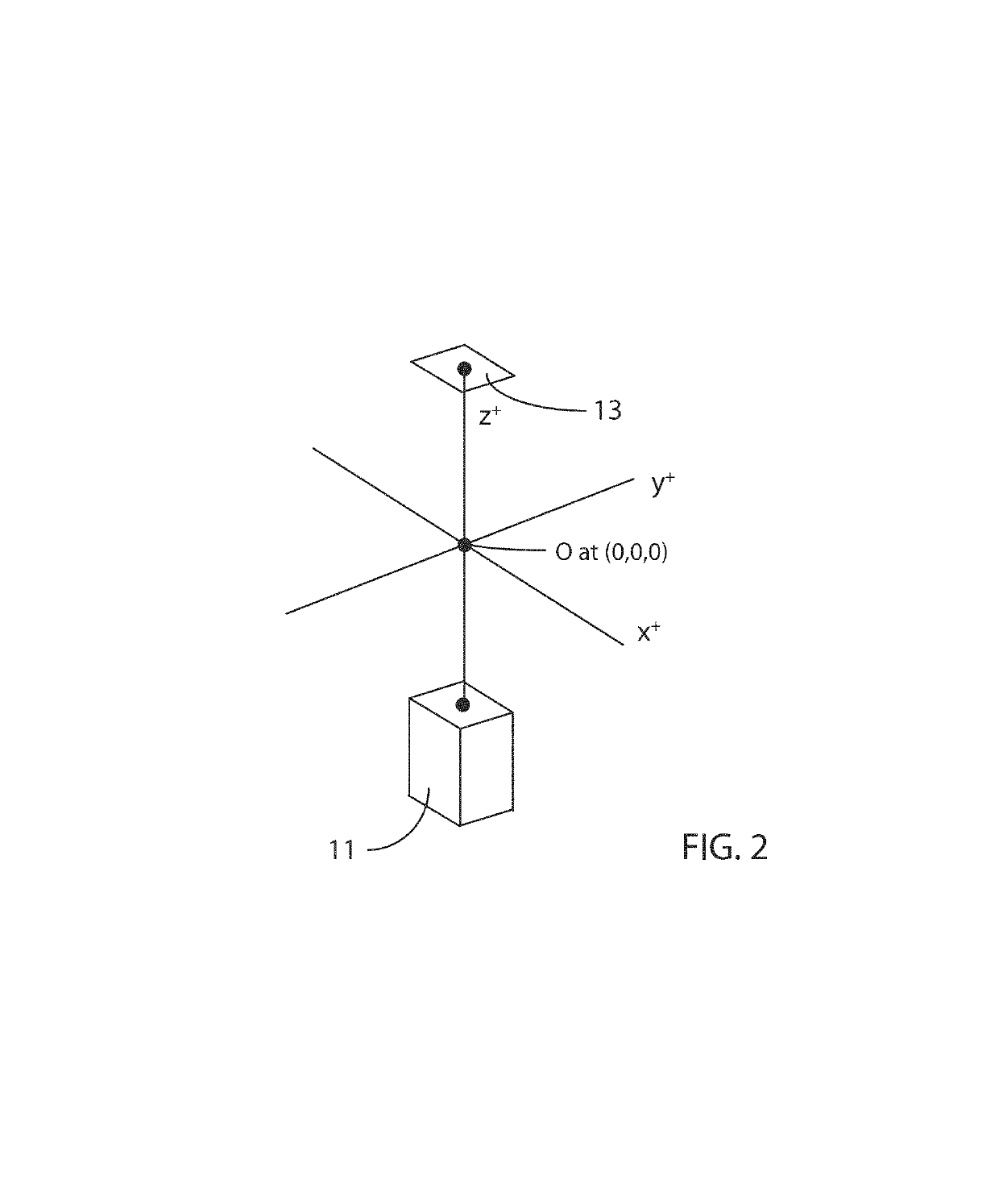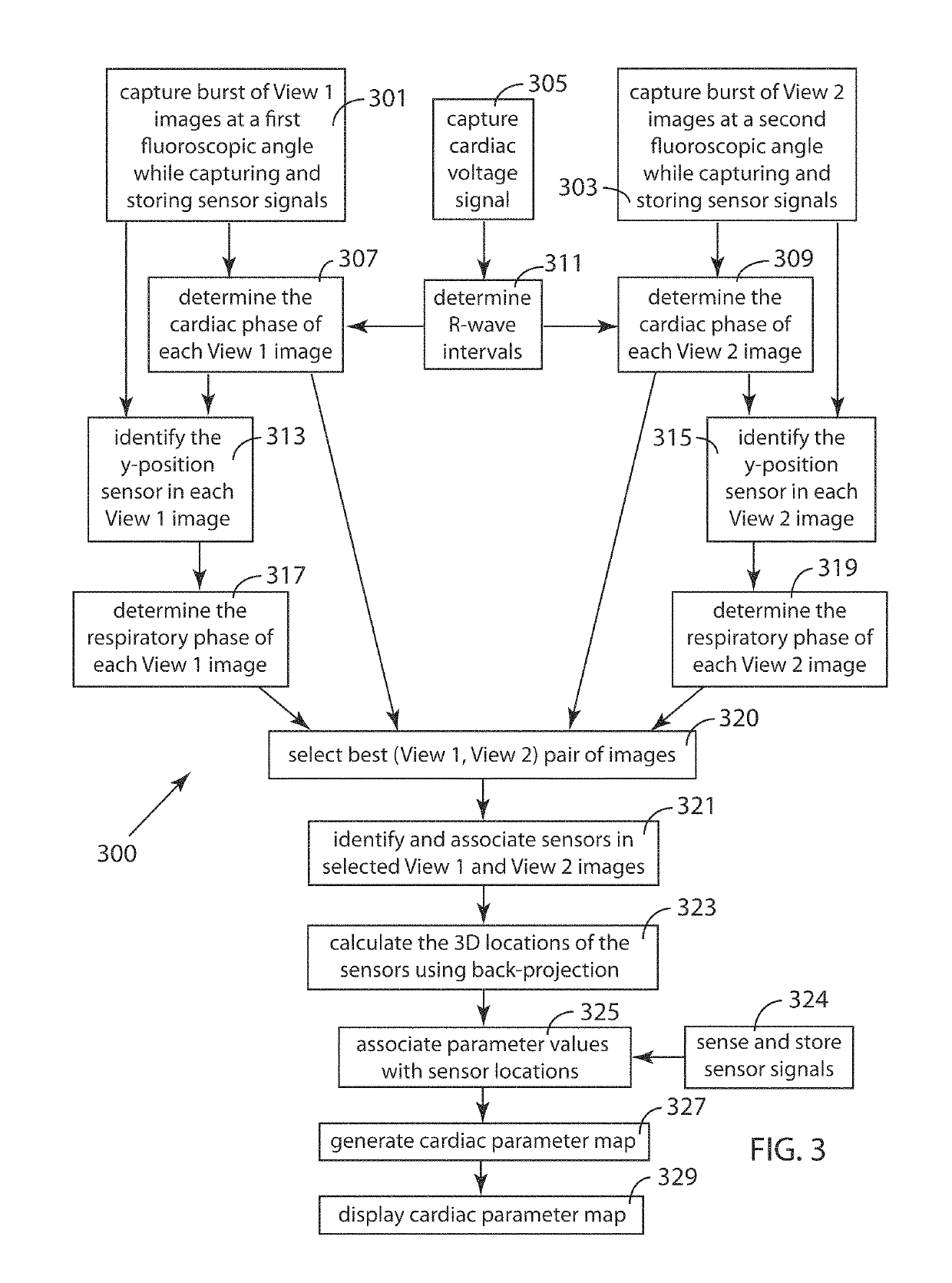Rapid 3D cardiac parameter mapping
a 3d and fast technology, applied in the field of medical fluoroscopy, can solve the problems of insufficient speed of point-by-point mapping and time-consuming mapping procedures,
- Summary
- Abstract
- Description
- Claims
- Application Information
AI Technical Summary
Benefits of technology
Problems solved by technology
Method used
Image
Examples
embodiment 300
[0068]FIG. 3 is a schematic block diagram illustrating an embodiment 300 of the inventive method for rapidly generating a 3D map of a cardiac parameter in a region of a living heart into which region a plurality of catheters, each having one or more radio-opaque sensors, has been placed. The method uses single-plane fluoroscopic images taken from two different angles (View 1 and View 2) in order to enable calculation of the 3D locations of the sensors. In the exemplary method presented herein, the sensors are cardiac electrodes measuring voltages, and the parameter map is a local activation time (LAT) map. The inventive method involves the use of one or more programmable computers to carry out the image processing, signal processing and other computational steps involved. In addition to the plurality of sensors, apparatus to sense cardiac rhythm, such as an R-wave detector with its associated electrodes, may be required to supply a signal from which the cardiac phase of the single-p...
embodiment 380
[0102]The primary mesh is then subdivided (adding more points and smaller intervening surfaces) in order to produce a more accurate surface which has all mesh points close to such surface. Method steps 391 through 395 and loop path 397 together comprise an iterative mesh-smoothing process which enables the final primary mesh to appear more natural (more like a physiological structure). In method step 391, additional intermediate mesh points are added to the primary mesh by a process of subdivision, and the resulting mesh is smoothed in method step 393. Laplacian and cotangent smoothing are among the smoothing approaches which may be applied in smoothing step 393. In decision step 395, the mesh is tested against smoothing criteria to determine if the mesh has nearly uniform edges of length below a predetermined threshold. If the criteria are not satisfied, the mesh is iteratively modified by looping back along loop path 397 to subdivision method step 391 and proceeds further until th...
embodiment 403
[0110]In embodiment 403, method step 324 is again shown separately to indicate explicitly that sensing and storing of cardiac parameter data to be associated with the 3D location data may be generated during initialization as well as during normal operation of C3DLS 20. The computational load, data sensing, and timing requirements of both RCPMS 400 and C3DLS 20 are such that the method steps of both systems are carried out within programmable computing equipment. It is anticipated that in many instances both RCPMS 400 and C3DLS 20 may be operating within the same computing equipment and both make use of one or more computer displays driven by such computing equipment. This is illustrated in FIG. 15 by output 407 of RCPMS 400 merging with output 409 of C3DLS 20 to generate and display one or more physiological maps. As above, observation and subsequent inputs by the user are illustrated by a dotted-line feedback pathway 403.
[0111]FIG. 16 is an exemplary LAT map similar to that of FIG...
PUM
 Login to View More
Login to View More Abstract
Description
Claims
Application Information
 Login to View More
Login to View More - R&D
- Intellectual Property
- Life Sciences
- Materials
- Tech Scout
- Unparalleled Data Quality
- Higher Quality Content
- 60% Fewer Hallucinations
Browse by: Latest US Patents, China's latest patents, Technical Efficacy Thesaurus, Application Domain, Technology Topic, Popular Technical Reports.
© 2025 PatSnap. All rights reserved.Legal|Privacy policy|Modern Slavery Act Transparency Statement|Sitemap|About US| Contact US: help@patsnap.com



